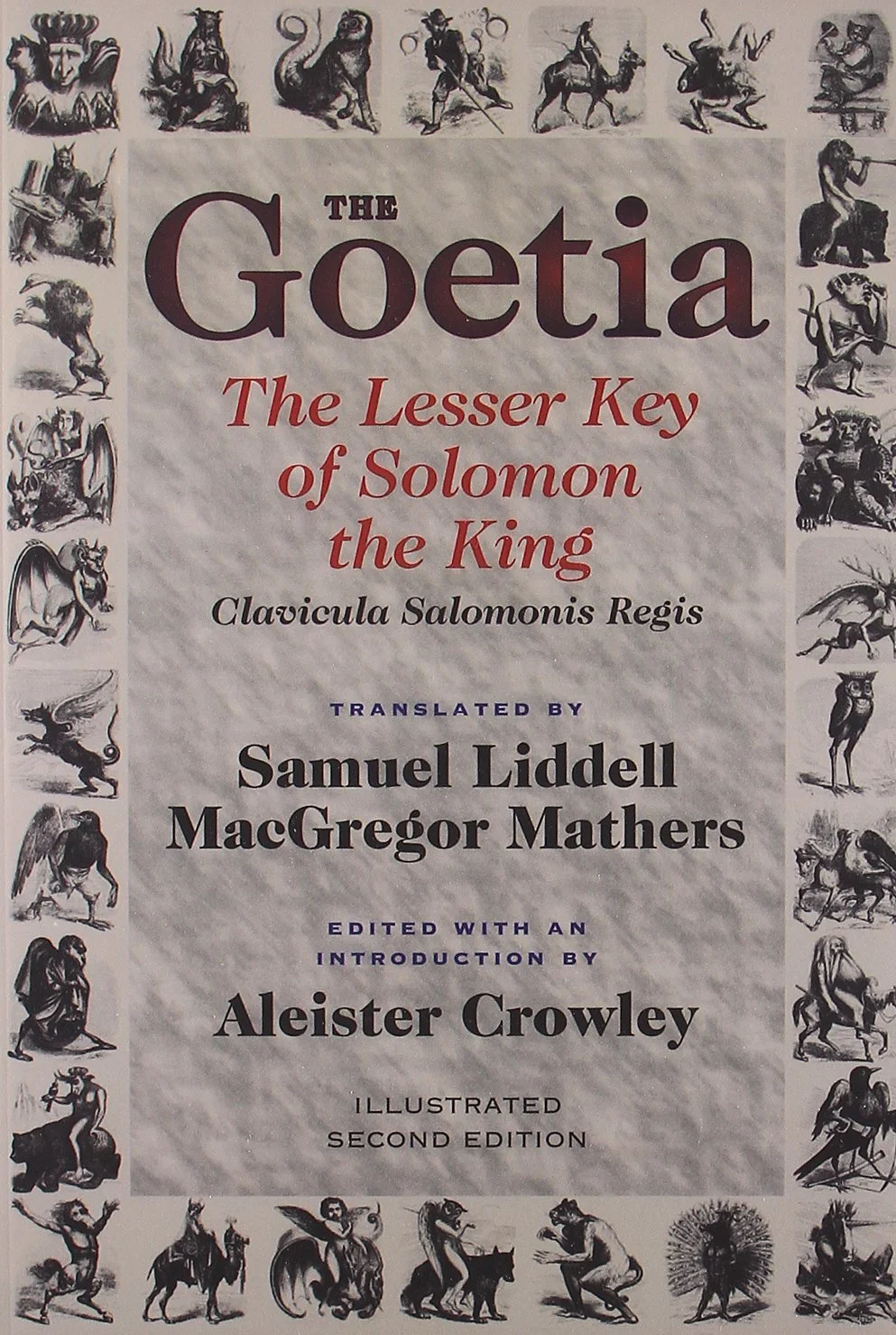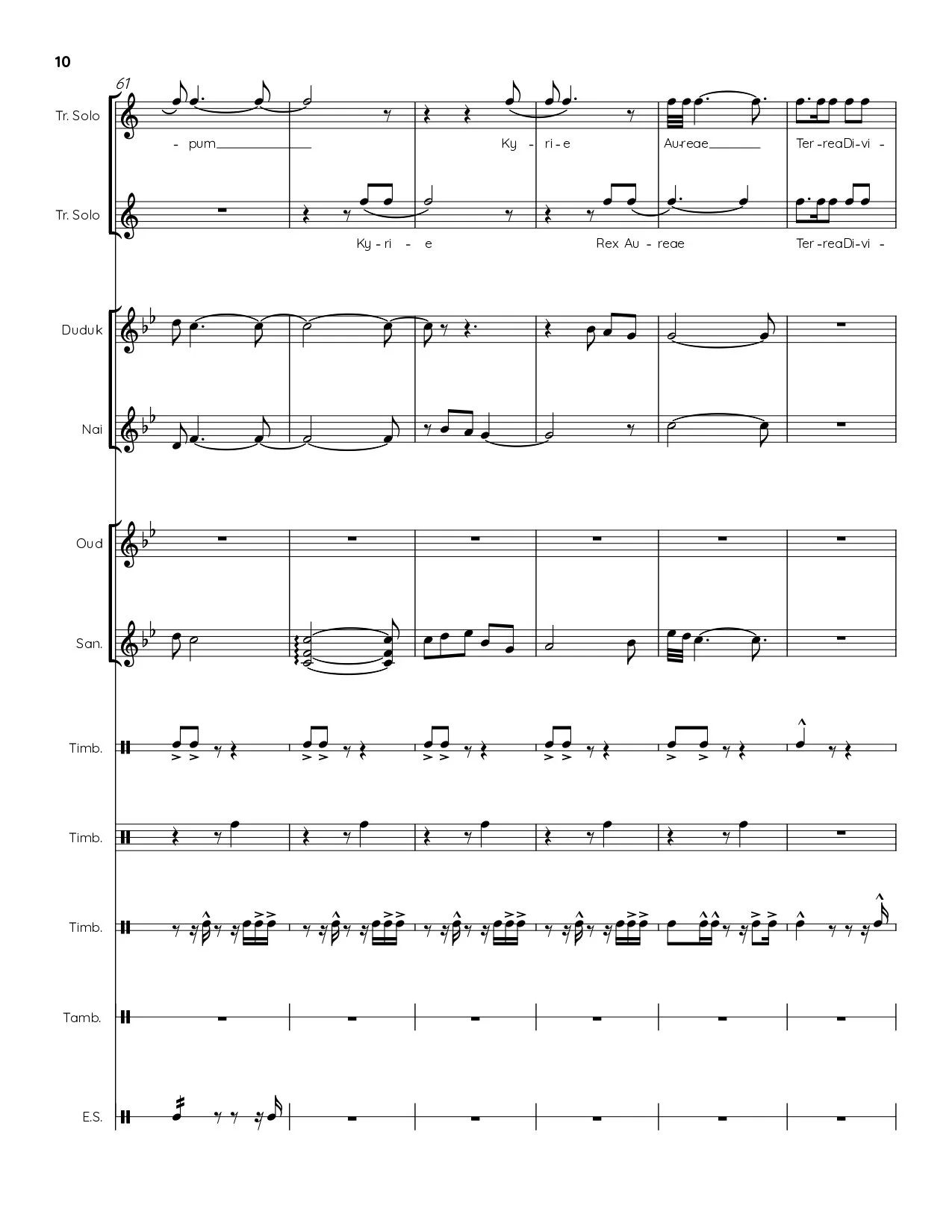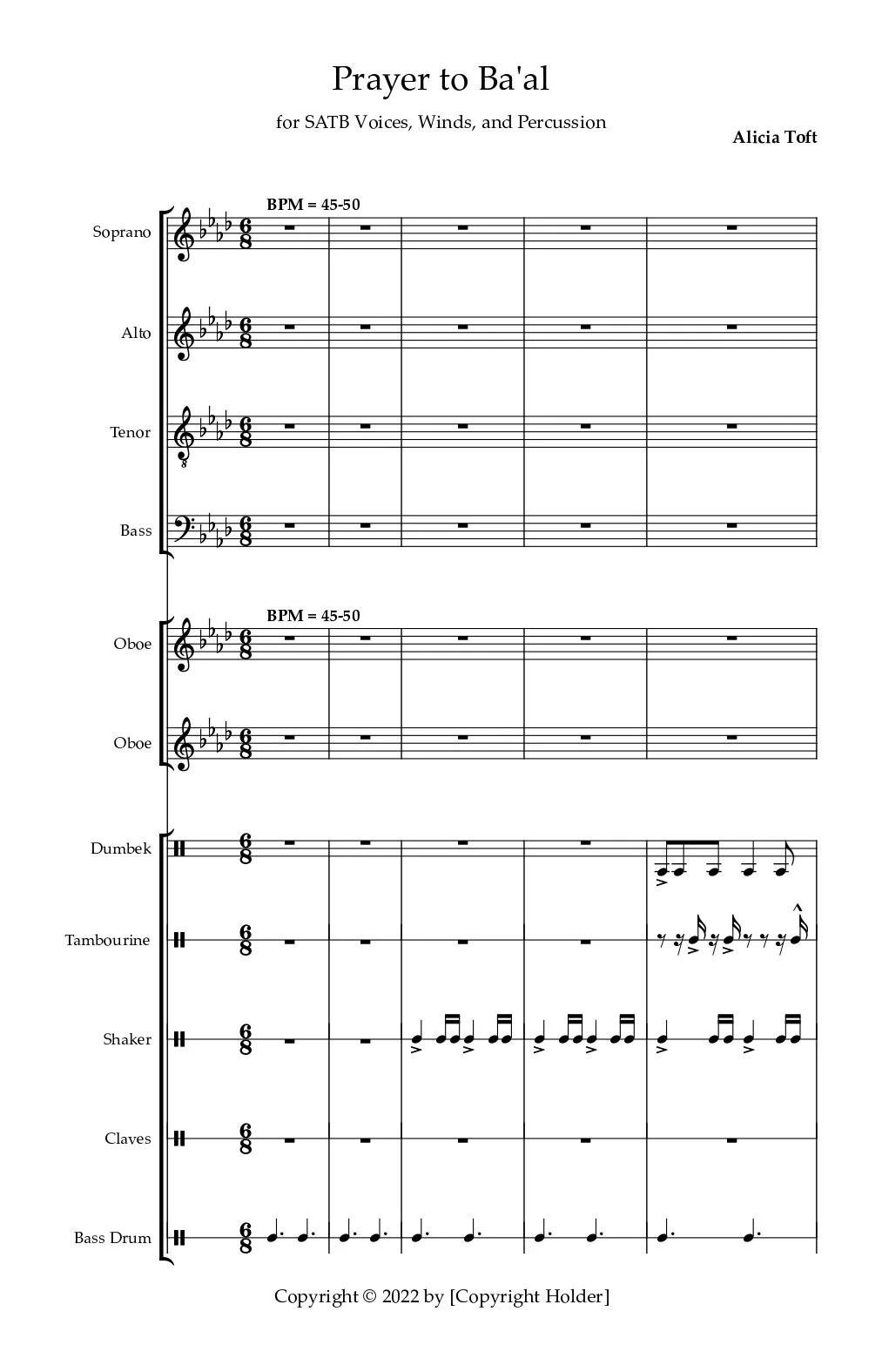Anatomy of a Sonic Offering
Here and there, I host private concerts for deities, daemon, entities, and whom- or whatever else my administrator thinks to invite. One evening in 2022, I donned a lovely red cloak and sang barefoot Va! Laisse Couler Mes Larmes (Werther) for my invisible audience. Little did know that one of my largest benefactors would appear in that audience as an unknown but intimidating spectator.
The Worship of Mammon
Evelyn De Morgan, 1909
King Mammon enjoyed my performance, and, as someone who has all the money and power in the world, has since elected me a privileged bard. Since then, he’s remained my largest musical benefactor, and has moved a number of irritating limitations out of my way so I can do what I love every day. To inspire me, he’s blessed my beloved piano where it sits under the gold curtains of my living room, and now it spreads Mammon’s golden miasma all over my house. To touch it leaves golden dust all over my fingers, and an overwhelm of inspiration to create and perform my music.
As one of my first benefactors, Mammon commissioned the piece we’re using as an example today: Wealth of the Earth (in C Dorian). He asked for something to ring out over his city, and your girl can deliver. In this article, I’ll talk about how I created this sonic offering, and how you can do the same.
Publish a Unique Sonic Offering for Your Deity
As with most commissions, Mammon asked for a few required elements to be included in this piece:
1) he wanted something simple and beautiful
2) he wanted something that would ring over the river, and
3) he wanted something sincere.
These requests were more than approachable, so I got to work.
Liddell did his best, but Crowley was
well and truly
out of his mind.
Probably something to do with the cocaine.
Research
When preparing a commission, I always take a couple of weeks to do some research and to meet the entity – this will inform the more cognitive aspects of the music, like the languages, lyrics, key, instrumentation, or song form for the piece. I want to know the entity’s earthly origins, their most influential time periods, any mythology or literature I can find describing personality type or behavioral quirks, and any other purveyances or qualities I could use as inspiration. If I’m less familiar with the entity in question, I’ll also take a deep dive into the entity’s energy to reap my own ideas and concepts of their personalities.
The methods for this vary depending on the kind of entity. For example, for the goetics, I’ll use their enns to call them for a quick chat. If it’s not goetic, I’ll use either instinct or appropriate traditional ritual to contact the entity again. This is usually what forms my idea of what mood or genre I want to use for this work.
Unfortunately, not as much is known about Mammon. This left me with the entity’s energy and personality as a guideline for what to create. I defaulted to Latin for the lyrics, and a theme of general praise based on what I had seen in the golden city. At the time, I was experimenting with Middle Eastern music, so that’s where I started composing.
Excerpt from Wealth of the Earth
Page 10
I used Sibelius at the time when I wrote this song, but have since moved on to MuseScore. Between the two, Sibelius isn’t a bad free option for people just looking to make some music, but I have to admit MuseScore really blows Sibelius out of the water in terms of serviceability, knowledgeable accessibility, and helpful community.
You can check out Musescore here.
Goals and Composition
Simplicity isn’t my strongest suit, so simplicity was my main goal for this piece. I almost always include vocals in my works – my voice is my tool, after all – so instead of creating a full choir, as is my wont, I instead elected to create a very modest female duet to echo hauntingly over the instrumentation.
In my work, I like to pay homage to the patron through musical stylings and instrumentals – and frankly, I sometimes find common Western instrumentation lacking. For this piece, I used a santoor, an oud, and some timbales for percussion; I LOVE a nai-dukduk duet for the main melody; and a tambourine and an egg shaker to fill out the sound I wanted to create. Again, simplicity was the game, so I opted to limit each instrument to one. This also created a sound more akin to a band of bards, which was appropriate for the setting.
I received no constraints on song length. I like to write long songs, so I opted to let inspiration flow and see where it took me. The result is about five minutes long. Not too bad, for early me. You should see Prayer to Ba’al.
Early Opening to Prayer to Ba’al
Alicia Toft
This song is a whopping 22 pages.
Because the duet and instrumentation for Wealth of the Earth were so simple, and because I was working with the energy Mammon gave me, I decided to set the piece in C Dorian and 5/8 time. I did this because Mammon’s energy really throws me off – I struggle to get a good look at that guy - and I wanted to allude to this by preventing a comfortable tonal or rhythmic center. The result was a unique sound and a surprisingly melodic affect. Unlike most of my pieces, the instrumental melody was written after the vocals, so this piece is very melodically-driven. I think the mood of the piece is joyful and enigmatic, but you’ll have to decide for yourself.
The Lyrics
The lyrics to Wealth of the Earth are in praise of Mammon, and reflect what I’ve seen in the golden city. This song works amazingly for a sonic offering because the lyrics butter up to Mammon, but also request splendors and access to wealth:
Aurum, Aurum Dominus;
Felicitatis, Dominus Opum.
Kyrie, Rex Aureae, Terrea Divitiae!
Corona Divitiarum, obiatio mea canticum.
Obstende.
Nobis tuae spledidae, Divitiae!
Tecum; ambulemus:
Illic, illic! In urbe aurea!
Nobis benedic, donum nobis! Obstende nobis!
Oh, Magna Mammon!
Or, in the queen’s English:
Golden, Golden One;
We wish you greatness, Lord of Wealth.
Be with us, King in Gold, Wealth of the Earth!
Crown of Riches, accept my offering of song,
And give mercy to us.
Show us to your splendor, King of All!
We are with you; walk with us:
There, there! In your golden city!
Your great blessings, show us! Show them to us!
Oh, Great Mammon!
Showy, right?
Recording and Mixing
I use a PreSonus AudioBox iOne with Studio One 5. At the time, I was using Studio One Artist, and that was fine for creating this piece. A little bit pricy, and frankly it’s not my favorite DAW, but it works for me and what little knowledge I have about mixing. I anticipate I’ll make a switch in the future, so if you have any recommendations, hit me up.
I love my mic. I have an MXL 770 Midnight, and it’s great for most of my work. I recorded Wealth of the Earth in an empty closet with some blankets and fabrics pinned to the walls to dampen a little of the sound. I’ve since upgraded the setup to include a Moukey recording screen and some additional sound dampening since I’ve moved my recording setup to a different room. But then again, I’m loud as hell, so you probably wouldn’t need all of that if you don’t want it.
This piece, like most of my work, requires very little mixing. I’m classically trained, so I’m trained to be as flawless as possible without any help at all. I recorded the vocal parts in a few takes and imported the instrumental parts separately into Studio One. Then I added Studio One’s included Pro EQ to clean up each instrument and vocal part (which I did a lot of research to figure out), then added a -3db limiter and a basic compressor to prevent clipping and clean up the sound. Then I adjusted the levels and recorded another set of the vocals to flesh out the duet’s sound. Then the final step was to add a ton of reverb to mimic the idea of echoing over a city, and boom. Here’s a song.
It’s easy to put songs out on Spotify. I use Emuband, but you’ll find more comprehensive step-by-step instructions as you keep reading.
Your Sonic Offerings: Step by Step
1. Clarify the idea, inspiration, or need. You’re writing a song for a reason. Are you asking for something? Are you offering a gift in gratitude? Are you just having fun?
Before you have a complete work, you’ll have an incomplete work; an idea, a melody, a desire, a poem, the remnants of a half-remembered dream; the memory of a particularly delicious snack. This is your seed to success.
Lacking inspiration? Check out the Lounge for weekly soundbite releases. Our current run of soundbites, loops, or short songs based on each of the Tarot cards will begin soon.
2. Research. If this is a sonic offering, then you’re offering it to someone. Who is receiving this gift?
Where is this entity known? What’s their history? Do they have known purveyances, attitudes, likes, or dislikes? Do their followers talk about them? How can you use this information to create a sonic offering that ties itself to the entity?
When writing music for entities or deities, it’s important to consider how you’ll choose to represent yourself with your work. Some entities will have specific requests or requirements for the music you create, while others won’t care at all. Most will be happy with whatever you give them, but some are strict with their epithets or knowledge. No need to be rude, you know?
3. Clear, Attainable Goals. I set up two tiers of goals for myself: first, I outline the most basic, easy-to-accomplish version of this song. Then I plan out my pie-in-the-sky, if-I-could-dream visions for this work. I work diligently to achieve the basic song; then when that’s all done, I start grabbing at stars.
Every goal you create should be a SMART goal. This method of outlining my sonic offerings has never failed me.
Is your outline Specific? Some specific goals to consider are: how much time will you really have to compose, record, mix and master this piece? How many voices or instruments do you know how to compose? How long can you realistically make the song? Nonspecific goals are impossible to reach; they don’t exist.
Is your outline Measurable? How will you determine whether each step of the process is good enough? How will you set boundaries to ensure you don’t get stuck? How do you know it’s time to accept what you have and move forward?
Is your outline Achievable? I know you want to compose the greatest sonic offering ever and receive eternal lauds from your deity for what you’ve done; but you have limited time, resources, and skills at your disposal, and perfectionism is the enemy of progress. Do you have the skills you need to play the eight instruments in this piece? Can you really sing an aria if you’ve never sung a day in your life? Don’t expect miracles from yourself.
Is your outline Relevant? Stay focused on the meaning behind the offering. You’re not planning to become the Taylor Swift for occult fanatics. You’re here to create a gift you know your deity will enjoy – and that’s the only point that matters.
Is your outline Time-bound? Give yourself a tangible and achievable timeframe. For hymns, I give myself a week to compose, 2-3 weeks to learn all the parts, 2-3 weeks to record, and 1-2 weeks to master. It seems like a long time, but when life gets in the way, I don’t need to panic. I’m in no rush.
4. Composing the Song. Do you have access to notation software, or are you relying on rote? Do you know how to compose for the instruments or vocalists you’ll need? Here are some considerations for your piece:
Vocals and lyrics: Do you write your own lyrics? If not, what poetry or chants are you using for your music? If so, how will you construct your lyrics? What’s the most important line? What do you want people to learn or feel?
Take care if using enns in your work. Not everyone is happy to have their enns blasted from the tower. If you’re not sure, ask. If you need help asking, contact me below.
Instrumentation: Enjoying an instrument isn’t the same as knowing its strengths and limitations. Is the instrumentation important to the sound? Can you play the instrument yourself, or do you need to hire? Are you using a DAW to access electronic instruments? If so, you’ll still need a basic understanding of how those instruments work.
Genre or mood: You might find helpful creative constraint or direction in choosing a genre, and you should definitely know what mood you’re trying to create with your piece. Maybe you’re working with Asmodeus and you want something jazzy; maybe Ba’al wants a lovely classical violin movement. Maybe a capella is enough; maybe you’ll need a full marching band. Or, maybe you just want something slow and intimate, or something joyful and simplistic. Simple and beautiful works every time.
Song length: How long is this song? Will you need to stretch out a melody, or are you in need of more editing? Take into account the limitations of software, computer memory, requests, production options, and audience interest. Most of the time, they’ll be happy with something sincere and well-constructed.
5. Recording, Mixing, and Mastering. To record, you’ll need a mic, a DAW, and a working knowledge of how each functions.
If you’re interested in what I’m using, here are links to my mic and DAW. The Midnight was limited edition, but the classic MXL 770 is still available.
If you’re not interested in learning how to record or master yourself, you’ll need to hire recording equipment or a recording booth, as well as a sound engineer. I’ve recently done work with (Elijah) EKmixmaster.
If you’re interested in becoming a one woman show, EdX offers rotating beginner courses on sound engineering and vocal recording here. I’ve taken a couple of these courses and found them helpful for a novice like myself.
Optional: Printing, Producing, and Copyright. This is so much easier than you’d think. As it turns out, anyone can produce music.
Not every piece needs a copyright. I only suggest copyrighting large works or works you’re particularly proud of creating, such as groupings of songs, or your favorite work to date. Frankly, our niche isn’t flush with copycats.
If you’re creating sheet music, you can use your notation software to export your music as PDFs wherever you like. However, if you want to have your music officially printed, you’ll need a little more time and money. My first hymnal, Hymns to the Old Gods Vol. I, is being put into print right now. Stay tuned to the newsletter for a step-by-step guide to learn how I did it!
Self-publishing your sheet music can be very easy, and services exist to streamline the editing and production process. However, if you want your music published for you, you’ll need to contact publishing houses (like DB Publishing, owned by S. Connolly – sound familiar?).
You’ll need third party support to put your music on streaming apps. I use Emubands to publish my music on Spotify and Apple Music. Emubands also helps you get paid when someone uses your work, and can distribute your music to many different music apps and services all at once. To include lyrics, like I did for Wealth of the Earth, I use Musixmatch.
Want a step-by-step guide like this one for copyrighting or printing your music?
Let me know below!
Your Offerings Are Worth the Work
Sonic offerings are deeply personal, and your success often depends on your acceptance that your work won’t ever be perfect. It’s our curse as artists, isn’t it. But, if you know how to manipulate your creative process when you get a new idea, and if you’re willing to do a little extra research, you’ll find that your SMART musical goals aren’t too far away. Plan carefully your composition, and then all that’s left to do is perform or record. Your friend, mentor, or patron will really appreciate your hard work.
Want to watch composition in action? Come visit me on Twitch!
My new channel is up and I’d love to see you!
Don’t know how to create your own music, but want an original sonic offering for your deity?
Contact me below for commissions.
Commissions are open 7.28.25
Want to stay on top of the newest information? Sign up for the OCC newsletter and be the first in the know!
Follow Alice on social media so you never miss an event or an update - or, join the Red Veil Lounge to chat directly or join an event!





